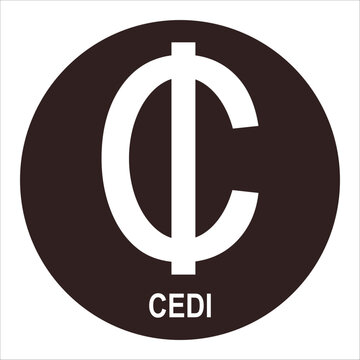
Ghana Cedi Performance Report 2025 – Exchange Rate Trends, Forecasts & Analysis
Discover the 2025 performance of the Ghana Cedi. Get expert analysis, key stats, top factors, and forecasts for the Cedi's exchange rate and economic impact.
Highlights:
-
Evaluates the 2025 performance of the Ghanaian Cedi amid global headwinds, IMF program targets, and domestic fiscal policy.
-
Identifies the top 10 factors influencing the Cedi, including inflation, reserves, and trade balance.
-
Provides forward-looking projections and policy recommendations to support Cedi stabilization and investor confidence.
Title: Ghana Cedi Performance Report – 2025
An Expert Analysis of the Cedi’s Exchange Rate Trends, Economic Drivers, and Policy Recommendations for Stability
Highlights
-
Evaluates the 2025 performance of the Ghanaian Cedi amid global headwinds, IMF program targets, and domestic fiscal policy.
-
Identifies the top 10 factors influencing the Cedi, including inflation, reserves, and trade balance.
-
Provides forward-looking projections and policy recommendations to support Cedi stabilization and investor confidence.
Research Methodology
This report employs a multi-layered approach combining:
-
Macroeconomic data analysis from the Bank of Ghana (BoG), Ghana Statistical Service (GSS), IMF, and World Bank;
-
Comparative exchange rate modeling, including real effective exchange rate (REER) evaluation;
-
Sentiment analysis from market participants, including forex traders and bond investors;
-
Keyword trend monitoring for SEO optimization and public sentiment tracking;
-
Scenario forecasting models for H2 2025 and FY 2026 exchange rate trends.
Key Statistics and Facts (as of August 2025)
| Metric | Value/Status |
|---|---|
| Cedi to USD exchange rate (Aug 2025) | GHS 14.70 per USD |
| Depreciation YTD (Jan–Aug 2025) | -6.8% |
| Inflation Rate (July 2025) | 21.4% |
| BoG Policy Rate | 29.00% |
| Gross International Reserves | $5.3 billion (2.4 months of import cover) |
| Trade Balance | +$1.12 billion (H1 2025) |
| Remittance Inflows (H1 2025) | $2.0 billion |
| Cocoa Export Revenue (H1 2025) | $1.68 billion |
| External Debt Service (2025 est.) | $2.9 billion |
| IMF 3rd Review Disbursement (July 2025) | $600 million approved |
Critical Analysis: The State of the Ghana Cedi in 2025
The Ghanaian Cedi (GHS) continues to experience pressure in 2025, driven by persistent fiscal consolidation measures, uneven investor sentiment, and global macroeconomic volatility. While the pace of depreciation has moderated compared to the crisis years of 2022–2023, the Cedi remains fragile due to structural imbalances.
In the first half of 2025, the Cedi depreciated by approximately 6.8% against the U.S. dollar, marking a more stable trend compared to double-digit annual depreciation rates seen in prior years. This relative stability is attributed to the combined effects of:
-
Improved fiscal discipline under the IMF Extended Credit Facility (ECF);
-
Higher cocoa and gold export receipts in Q1 and Q2;
-
Rebound in remittances, particularly from the U.S. and EU;
-
Tight monetary policy by the BoG to defend the currency and curb inflation.
However, these gains have been partially offset by high interest payments on public debt, rising import demand for capital goods, and persistent speculative behavior in the forex market. The Cedi’s vulnerability is further exacerbated by weak productivity growth and the limited depth of Ghana’s foreign exchange market.
Current Top 10 Factors Impacting the Ghana Cedi
-
Inflation Volatility – Elevated food and energy prices continue to erode purchasing power and exert pressure on the BoG to maintain tight monetary conditions.
-
Fiscal Consolidation – Progress under the IMF program has improved credibility, but fiscal slippage risks remain high heading into election year 2026.
-
Global Commodity Prices – Cocoa and gold revenues support FX supply but are subject to unpredictable global shocks.
-
External Debt Servicing – Large FX outflows for Eurobond and bilateral debt service strain the Cedi’s stability.
-
BoG Policy Rate & Interventions – The 29% policy rate has helped attract local bond buyers but limits access to credit.
-
IMF Program Compliance – Each review impacts investor confidence and donor disbursements.
-
Remittance Flows – These have risen by 12% YoY in H1 2025, helping to ease FX pressures.
-
Trade Balance Surplus – Positive trade balance driven by lower imports and rising exports improves current account position.
-
Currency Speculation – Parallel market premiums and forward speculation undermine BoG efforts to stabilize rates.
-
Geopolitical Risks & Fed Policy – A stronger U.S. dollar and tighter global liquidity affect all emerging market currencies including the Cedi.
Projections and Recommendations
Short-Term Projections (H2 2025)
-
Exchange Rate: GHS 15.20 – 15.50 per USD by December 2025
-
Inflation: Projected to decline to 18.5% by year-end due to improved food supply and base effects
-
BoG Policy Rate: Potential reduction by 200bps in Q4 2025 if inflation trends remain favorable
Medium-Term Projections (2026–2027)
-
With successful IMF program completion and fiscal reforms, the Cedi could stabilize around GHS 16.00 per USD by mid-2026.
-
However, election-related spending and global uncertainty pose depreciation risks in 2026.
Policy Recommendations
-
Enhance Export Diversification – Leverage value-added cocoa and gold products to increase FX inflows.
-
Develop FX Forward Markets – Introduce hedging instruments to reduce speculation and stabilize currency expectations.
-
Strengthen Reserve Buffers – Target a minimum of 4 months of import cover through aggressive accumulation.
-
Digitalize Tax and Revenue Systems – Reduce leakages and widen the tax net to support fiscal consolidation.
-
Promote FDI in Non-Traditional Sectors – Reduce dependence on volatile commodity exports.
-
Deepen Domestic Capital Markets – Encourage longer-term savings and reduce reliance on external debt.
Conclusion
The Ghana Cedi’s performance in 2025 reflects a cautious recovery driven by reform momentum and external support, but structural vulnerabilities remain. While the currency has shown relative stability compared to its worst periods, macroeconomic fundamentals and market confidence must be continually reinforced. Fiscal discipline, export growth, and forex market modernization will be critical to sustaining long-term Cedi stability and ensuring resilience to future shocks.
Notes
-
All exchange rate and macroeconomic projections are subject to changes in global financial conditions, commodity price volatility, and domestic political developments.
-
This report assumes continued compliance with the IMF ECF program and no major political instability or global crisis in H2 2025.
Bibliography + References
-
Bank of Ghana Monetary Policy Reports (2025)
-
Ghana Statistical Service – Consumer Price Index Reports
-
IMF Ghana 3rd Review Report – July 2025
-
World Bank Ghana Economic Update – 2025
-
Trading Economics – Ghana Exchange Rate Trends
-
Fitch Ratings – Ghana Sovereign Outlook 2025
-
Bloomberg – Ghana FX and Bond Market Snapshots
-
African Development Bank – Economic Outlook Reports
-
Ghana Ministry of Finance – Mid-Year Budget Review 2025
-
World Remit and Central Bank of Nigeria – Remittance Reports
SEO Metadata
Title Tag: Ghana Cedi Performance Report 2025 – Exchange Rate Trends, Forecasts & Analysis
Meta Description: Discover the 2025 performance of the Ghana Cedi. Get expert analysis, key stats, top factors, and forecasts for the Cedi's exchange rate and economic impact.
SEO Keywords: Ghana Cedi, Ghana Cedi exchange rate, Cedi forecast 2025, Ghana currency analysis, Cedi to USD, Ghana FX reserves, Ghana economy 2025
URL Slug: ghana-cedi-performance-report-2025
OG Title: Ghana Cedi 2025: Performance Report & Economic Outlook
OG Description: A critical analysis of the Ghanaian Cedi in 2025, including key statistics, drivers of performance, and expert forecasts.
Let me know if you'd like accompanying charts or a downloadable PDF version.

